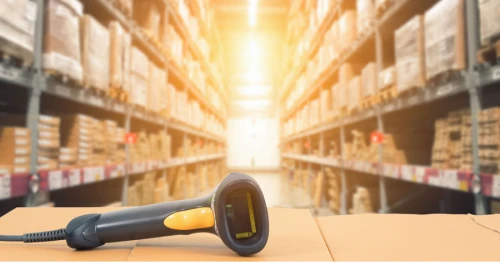eCommerce Cost Guide
Discover the true costs of ecommerce platforms in our free guide.
Success Stories
See how industry leaders succeed with Virto.
Virto & Gladcloud
Boost ecommerce with advanced marketing.









Discover the true costs of ecommerce platforms in our free guide.
See how industry leaders succeed with Virto.
Boost ecommerce with advanced marketing.
A B2B sourcing is more than just buying goods in a marketplace. At least it is believed that this process is quite complicated. However, a purchasing platform can help you make this process much easier. In this article, we will compare purchasing software which is used for procurement, discover the main types of purchasing systems, B2B sourcing platforms and cover 7 examples of sourcing platforms for procurement to consider in 2024.
Purchasing automation popularity is increasing, and for a reason: it doesn’t only streamline the sourcing process but also reduces operational costs, improves relationships with suppliers and customers, and leads to greater efficiency.
According to Data Bridge Market Research, the global sourcing software market is going to double from 2021 to 2029 (from USD 7,058.52 million to USD 14,977.19 million). This means procurement comes to the era of massive digitalization, inevitably moving to more process automation.
The purchasing process entails several standard steps, and almost all of them can be automated:
Procurement platforms encompass various software and digital solutions. The differences often lie in the platform features, functionalities, target audience, and more. We can clearly differ several types of these platforms:
B2B sourcing refers to the process of finding suppliers or vendors that will be able to fulfill the businesses' procurement needs. It also includes the product acquisition itself.
Purpose: B2B sourcing software is primarily focused on identifying and selecting suppliers.
Features: Usually includes RFQ (Request for Quotation) tools, allows for supplier evaluations and bid management, and helps discover suppliers.
Examples: Jaggaer, Scout RFP, GEP SMART, and others.
Purchasing platforms and marketplaces are digital tools tailored to facilitate the buying and selling of products; they often offer included procurement capabilities and features.
Purpose: They concentrate on the transactional aspect of procurement, specifically caring about PO creation and invoice management.
Features: Usually, you can find purchase order management, capabilities of invoice processing, and payment processing features.
Examples: Procurify, Precoro, TradeIndia.
Besides that, you can find the following among B2B purchasing tools: SRMs, Contract Management, e-procurement, Purchase-to-Pay (P2P) Platforms, and more.
Software for purchasing is primarily focused on automating the purchasing process. This includes tasks such as creating purchase orders, approving requisitions, managing contracts and tracking logistics. Purchasing software is typically used by businesses that purchase goods and services from a limited number of vendors on a regular basis. This type of software is best suited for businesses that have a straightforward purchasing process and do not require complex sourcing capabilities.
Sourcing software helps manage the entire procurement process: sourcing, payments, and more. This includes identifying potential suppliers, supplier evaluations, contracts negotiating, managing supplier relationships, and other tasks. Sourcing software is typically used by businesses with complex procurement processes.
|
Purchasing System Software
|
Procurement Software
|
B2B Sourcing Platforms
|
|---|---|---|
| Common features | Common features | Common features |
| Support requisition management | Support requisition management |
Support requisition management |
| .Help control invoice processing and payments | .Help control invoice processing and payments | Help control invoice processing and payments |
| Offer purchase order management | Offer purchase order management | Offer purchase order management |
| Make spend management easier | Make spend management easier | Make spend management easier |
| Specific features | Specific features | Specific features |
| Manage the purchasing part only | Manage the full purchasing cycle and strategic process of product or service sourcing | Emphasizes supplier profiles and communication channels. |
| Refer to transactional activities | Relate to product delivery and receipt | Typically lacks advanced cost optimization functionalities. |
| Related to payments and orders | Cataloging/categorization | Primarily focused on supplier discovery and RFQ |
| Budgeting/forecasting | Inventory management | Facilitates supplier discovery, communication, and pricing negotiation. |
While purchasing and procure software serve different purposes, they are often used together. For example, purchasing software can be used to manage routine procurement tasks, while B2B sourcing platform can be used to manage more complex sourcing tasks.
A purchasing platform is similar to an ecommerce marketplace. The only difference is that instead of offering products directly to the end user, it supports the sale and purchase of supplies, technology, services, and other commodities. Standardly used for B2B or B2G transactions.
Enterprises can automate their entire source-to-pay cycle using purchasing marketplaces and software. This includes analyzing and managing expenditures, contract management, and invoice payments, allowing users to have complete control over all sourcing process operations.
One of the primary benefits of using purchasing software is the ability to leverage data to make informed purchasing decisions. Sourcing software typically includes analytics tools that enable businesses to track spending, identify cost savings opportunities, and monitor supplier performance. By leveraging this data, businesses can optimize their procurement process and reduce costs over time.
Another key benefit of using purchasing platforms is the ability to manage supplier relationships more effectively. Purchasing software enables businesses to track supplier performance, monitor contract compliance, and identify opportunities for collaboration. By building strong supplier relationships, businesses can improve quality, reduce costs, and increase overall efficiency. Here is a list of main sourcing software benefits:Overall, Sourcing platforms for procurement can help organizations improve their processes, reduce costs, and increase efficiency, which can lead to improved profitability and competitiveness.
If your business has a simple sourcing process and only works with a few suppliers on a regular basis, you may try to use basic tools such as spreadsheets or email (however, professional purchasing software can give you an opportunity to scale!).
Purchasing tool can be an excellent investment when you have a complex sourcing process and work with multiple suppliers. It can help you manage the entire procurement process, from sourcing suppliers to payment processing, identify potential suppliers, conduct supplier evaluations, negotiate contracts, manage supplier relationships, and track supplier performance. Purchasing marketplaces can also help you leverage data to make informed purchasing decisions, identify cost savings opportunities, and monitor supplier performance.B2B purchasing platforms is designed to help businesses manage the sourcing process, from sourcing suppliers to payment processing. Different purchasing software solutions may offer varying features, but some key features that are commonly found in purchasing marketplace include:
What software is used for procurement? Generally, both Purchasing and Procurement Software are essential. The final choice depends on the needs and particular tasks of your business. Here are some examples of procurement management systems and procurement software used by businesses worldwide:
- SAP Ariba
Peer Insight Rating: 4.3 / 5
SAP Ariba is a cloud-based procurement software solution offeruing various procurement tools, including sourcing, contract management, supplier management, and spend management.
- Coupa
Peer Insight Rating: 4.4 / 5
Coupa is a spend management platform that includes procurement tools, such as sourcing, purchasing, and supplier management.
- Procurify
GetApp Rating: 4.5 / 5
Procurify is a procurement system and spend management platform that includes features such as purchase order creation, invoice management, and spend analytics.
- Oracle Procurement Cloud
Peer Insight Rating: 4.2 / 5
Oracle Procurement Cloud is a procurement software system that includes tools for sourcing, purchasing, and supplier management, as well as features for contract management and spend analysis.
- Jaggaer
Peer Insight Rating: 4.6 / 5
Jaggaer is a cloud-based source-to-pay platform that includes procurement tools such as sourcing, supplier management, and spend analytics.
- Zycus
Peer Insight Rating: 4.6 / 5
Zycus is a software solution that includes tools for sourcing, purchasing, supplier management, and contract management. Fits well for small business procurement software
- TradeGecko
GetApp Rating: 4.6 / 5
TradeGecko is a procument system, an inventory management and purchasing software that includes features for purchase order creation, inventory tracking, and supplier management.
Most of these best purchasing software options can cover the tasks of a middle-sized business. The best solution for enterprise-level and B2B companies would be a B2B procurement marketplace like Virto Commerce offers. B2B Marketplaces offer a comprehensive sourcing with features of all these tools included.
Virto Commerce is an open-source API-based platform that offers many exclusive features and capabilities of procurement marketplaces other solutions don’t. For example:
Moving to B2B procurement marketplaces and purchasing software purchasing is a new level of ecommerce. Choosing eProcurement software systems can increase efficiency by providing a centralized platform for businesses to purchase goods and services from a wide range of suppliers. It can also give businesses access to a larger pool of suppliers, leading to cost savings and better transparency in pricing and product information.
The Virto Commerce team is always ready to consult you on the latest trends and features and help to choose the best sourcing software. To learn more, contact us, and we will reach out personally.


